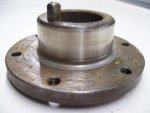GUNNY 155
Member
- 238
- 4
- 18
- Location
- elgin illinois
I am getting a very small oil leak on my engine after being run and it sits over night. I get a drop of oil hanging off of the front of the pan where the filler plate is so it is hard to tell where exactly it is coming from. I have had the pan off twice. The second time I removed the filler plate which was distorted and refaced that and resealed it. Still no help. I'm starting to think it may be the timing cover gasket or the steel plate behind it but cannot be sure. I also cannot figure out where those two little round rubber seals that come with the Fel Pro pan gasket sets go or if they are maybe for another application besides the M37. Anyone out there have any suggestions or have had these same problems? If so I could use some help. Built a lot of engines in my day but never ran into a problem like this before with a leak that will not stop. Appreciate any help from my friends out there.


